During the resistance war against the US to save the country, Quang Ninh was not only a " black coal region " that fed the entire industry of the North, but also a "red address" that marked glorious victories, writing the heroic history of our army and people. Every inch of land, port, and factory here is a witness to the days of arduous but proud fighting.
Steel battlefields in the midst of coal and fire
After the failure of the "Special War" in South Vietnam, on August 5, 1964, the US imperialists staged the "Gulf of Tonkin" incident and began escalating their bombing of the North. The Quang Ninh mining area, especially Cua Ong, became one of the most heavily bombed areas, because this was where factories, ports, warehouses were concentrated, and was the lifeline of coal consumption for the whole country.
Faced with that situation, in 1965, Cua Ong Wharf Enterprise established the Cua Ong Screening Self-Defense Company with 137 people, equipped with guns ranging from submachine guns, medium machine guns to 12.7mm and 14.5mm anti-aircraft guns . In a short time, this force achieved many resounding victories, typically shooting down two American planes in 1965 and 1966. By 1972, the Cua Ong Screening Self-Defense had developed into two battalions with 576 people, including an infantry battalion and an anti-aircraft artillery battalion, equipped with four additional 37mm cannons.
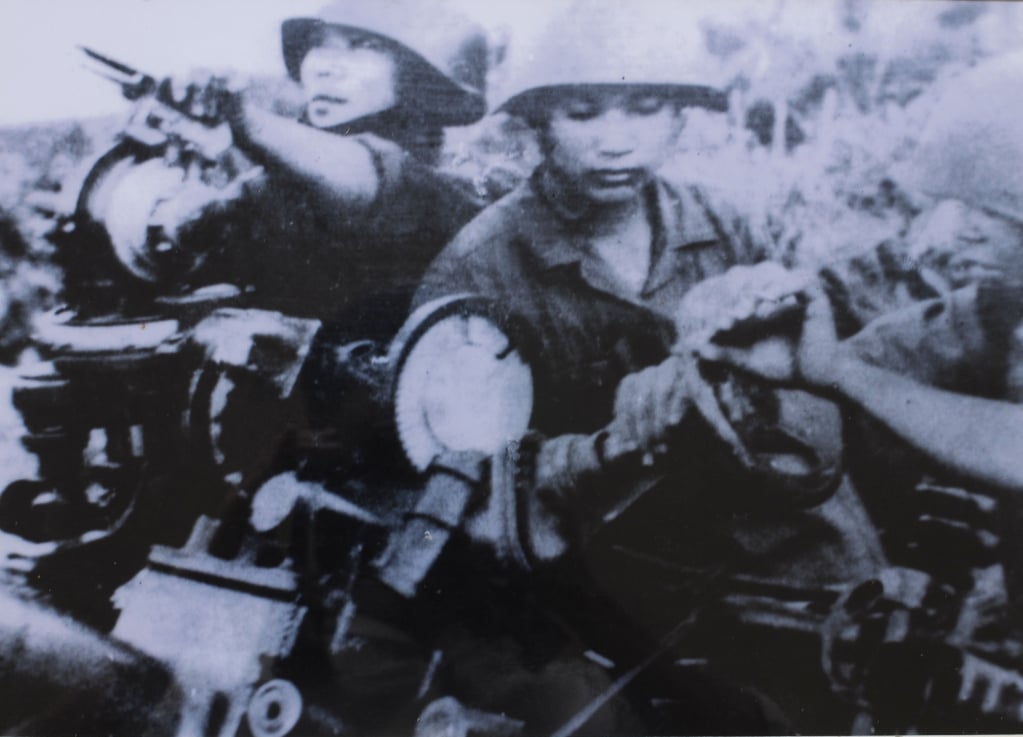
The newly added guns were arranged into a 37mm artillery position located in the northwest direction of Cua Ong Wharf Enterprise on the top of a 60m high hill, opposite the screening house, close to Highway 18. This was a very favorable position for observing aircraft. To the north was a high hill range so aircraft could not detect it from afar and attack from behind. This direction had an artillery position of the main force supporting it. The 37mm artillery position was arranged in a trapezoid shape, facing the Southeast, Southwest, North and Northwest directions. Each gun had a hole dug 3.5m wide and about 1.2m deep, the guns were connected by trenches and each anti-aircraft gun had a trench leading to a shelter, the trench was 80cm wide and 1.2m deep.
Despite facing a series of fierce bombardments from the US Air Force, the 37mm artillery site still stood firm, playing a key role as a "steel shield" to protect the safety of the screening house area, Cua Ong port, and important transportation routes. According to Mr. Bui Duc Minh, a former soldier in the Cua Ong Screening House Self-Defense Team recorded in the book Historical Relics of Quang Ninh Province, on May 10, 1972, when 8 US aircraft divided into 2 groups to attack 2 targets: the screening house and Cua Ong port, the Cua Ong Screening House Self-Defense Force coordinated with the main force, accurately using 37mm artillery to shoot down an A4 in the first volley, inspiring the soldiers and people fighting to protect the Fatherland.
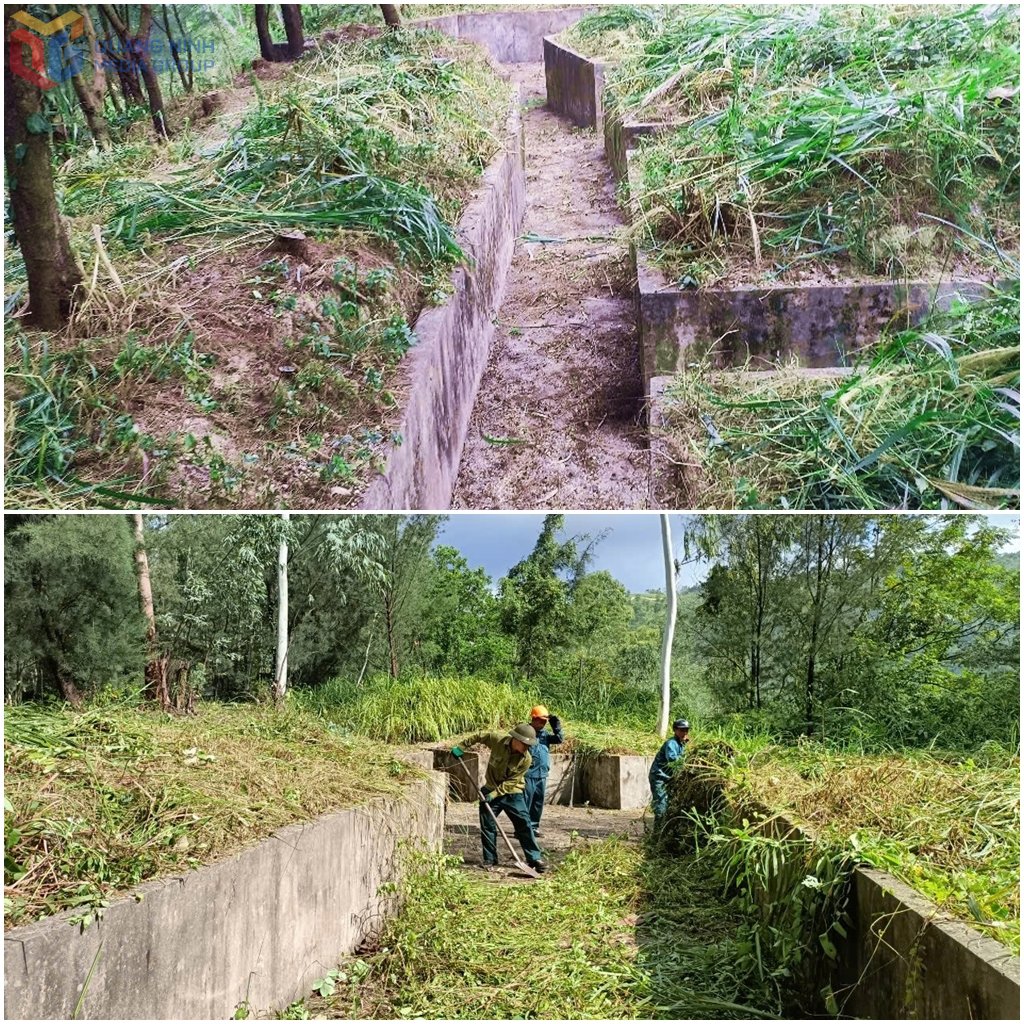
The 37mm artillery site is not only a place to demonstrate combat power, but also a symbol of the resilient spirit and determination to win of the Cua Ong Self-Defense Force. Although American aircraft carried out hundreds of attacks, with the support of the artillery site, the Cua Ong Wharf Enterprise still stood firm, quickly restoring production after each enemy bombing raid.
The old artillery site is now located in the relic cluster of Poóc Tích 1 bridge - anti-aircraft artillery site - command bunker of the Cua Ong Coal Selection Company, in Cua Ong ward, Cam Pha city, which was recognized as a historical relic by the Ministry of Culture and Information (now the Ministry of Culture , Sports and Tourism) in 1997, a red address to educate the tradition of patriotism for today's and future generations. Ms. Le Kim Anh, a worker at the Appraisal Workshop, Cua Ong Coal Selection Company, shared: When standing in front of the anti-aircraft artillery site, I could not help but be moved and admired by the resilient and indomitable fighting spirit of the previous generation - those who did not spare their blood and bones to protect the independence and freedom of the Fatherland. For us, the workers who are attached to the production line every day, competing in labor is a practical way to show gratitude to the previous generation, and at the same time contribute to continuing the glorious history of the Cua Ong Wharf Enterprise in the past, and the Cua Ong Coal Selection Company today .
Along with Cua Ong coal area, Xuan Son land (Dong Trieu) is also a place that marks resounding victories in the years of fighting against the destructive war of American imperialism. The relic of the 12.7mm anti-aircraft gun site in Xuan Vien area, Xuan Son ward is a vivid testimony, reminding of the glorious time of the army and people of Xuan Son in the resistance war to protect the homeland.
On August 15, 1966, when American aircraft were massively attacking Cam Bridge, the air defense forces of Hung Dao and Xuan Son communes, along with air defense troops from positions on both banks of the Cam River and neighboring areas, opened fire simultaneously, spreading dense, multi-layered nets of fire, tightly surrounding the enemy aircraft formation. In that fierce battle, the 12.7mm anti-aircraft gun squad of the Xuan Son commune militia, at the position near Mieu wharf on the Cam River, demonstrated excellent strategy, bravery and leadership. Accurate rounds of bullets from the 12.7mm anti-aircraft gun position hit the enemy aircraft, causing one to catch fire and fall amid the resounding cheers of the Dong Trieu army and people.
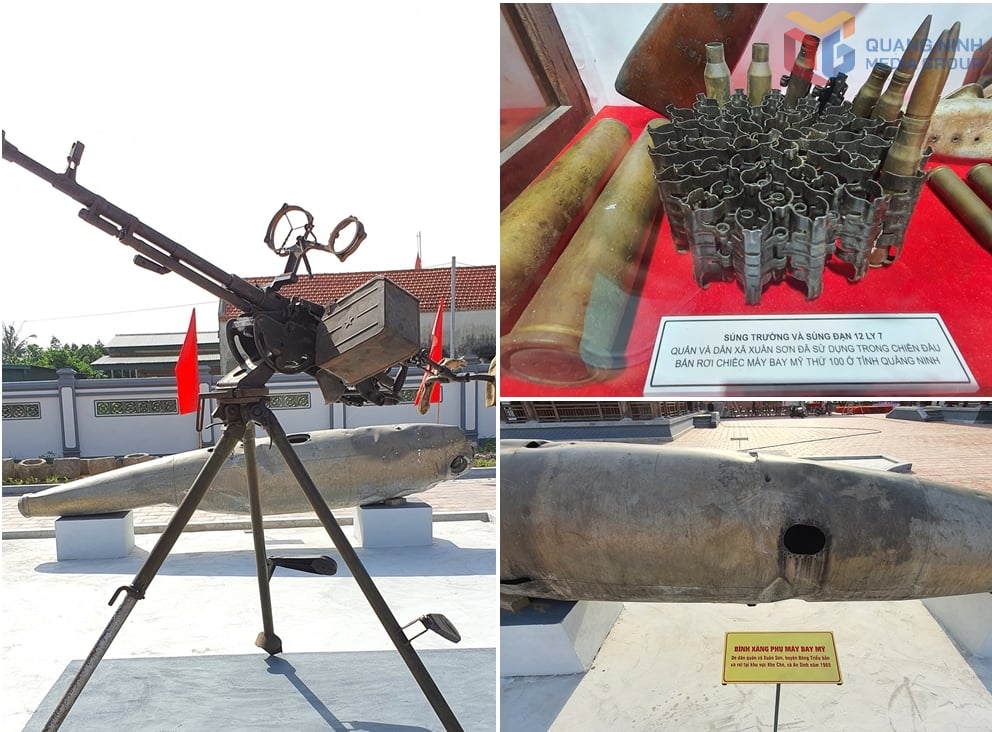
Notably, this plane was the 100th US Air Force plane shot down in the sky of Quang Ninh - a memorable milestone in the resistance war against the US. In recognition of this outstanding feat, Uncle Ho sent a letter of praise and the State decided to award the First Class Military Exploit Medal to the Xuan Son militia.
Today, at the location where the American plane was shot down, on Highway 18, at the foot of Cam Bridge, the local government has built a Victory Monument to commemorate and honor the heroic feats of our army and people, especially the army and people of Xuan Son commune. The 12.7mm machine gun that made a historic feat, shooting down the 100th plane, is now preserved and solemnly displayed at the Dong Trieu War Zone Center, Binh Duong commune, Dong Trieu city, as a vivid testament to the resilient and indomitable fighting spirit of the homeland during the years of resistance against the US.
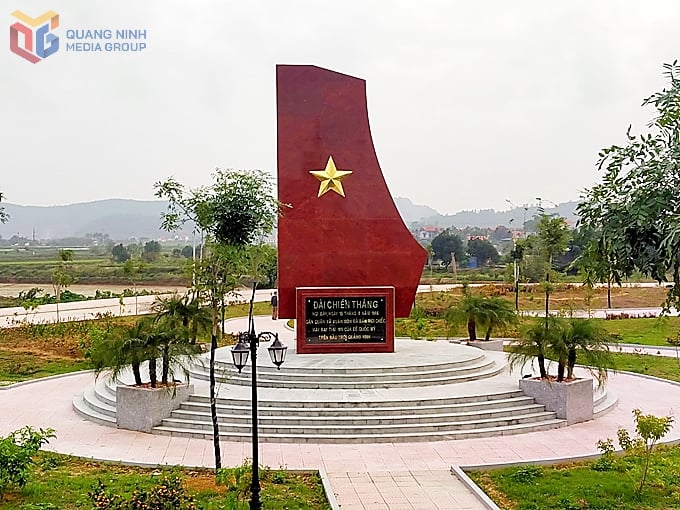
Resilient in the midst of bombs and bullets
Not only is it a heroic land in the war, Quang Ninh Mining Region also preserves many historical relics, marking the silent feats in labor production and support for the South. Notably, the Quang Ninh Post Office Main Center on Bai Tho Mountain is associated with the persistent efforts of the cadres and employees of the Post Office, ensuring that communication from Hanoi to Quang Ninh and from Hon Gai to all places was always safe and smooth during the years of fighting against the destructive war by the US imperialists' air force.
The project was built in 1968 on Bai Tho Mountain, serving as an important information connection point between Quang Ninh and the Central Government. According to Mr. Dam Hien, a former official of the Quang Ninh Post Office, the choice of Bai Tho Mountain as the location for the Main Power Center was not accidental, because this is the highest limestone mountain in the archipelago of islands in Ha Long Bay, with 1/3 of the mountain area bordering the sea and 2/3 bordering the old town of Hon Gai. The natural caves inside the mountain are ideal places to place communication equipment, ensuring safety during wartime and facilitating the transmission and reception of signals via microwave antenna systems.
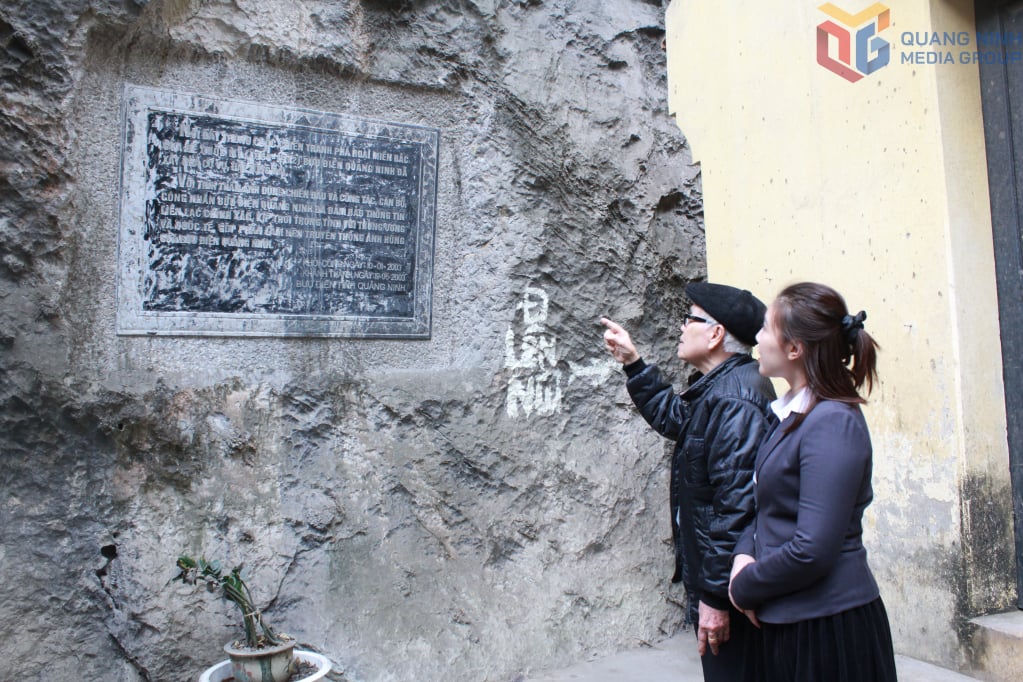
During the period of fighting against the US imperialists' air war of destruction (1964-1972), the Quang Ninh Postal and Telecommunication Center became a vital "link" in the national information system and was also a key target of the US Air Force, with the plot to cut off communication between Quang Ninh and the Central Government.
On June 9, 1972, during the US air force bombing of Hon Gai town, the Main Power Center was completely destroyed. The entire wiring system and the mechanical system were broken, and the antenna mast on the mountain top was also hit by a rocket and collapsed. That bombing took the life of female telegraph operator Nguyen Thi Lat while she was on duty next to the switchboard, at the age of 22. Her sacrifice is a symbol of the resilient fighting spirit and dedication to duty of those working in information work during wartime.
To date, the vestiges of the Quang Ninh Post Office Main Electricity Center on Bai Tho Mountain still include the system of switchboard caves, evacuation caves of the command team, the telephone line processing team, shelter caves and microwave antenna masts. The office building, switchboard house, and microwave house have been destroyed by time and war, leaving only the foundation and old walls. In 2000, the Quang Ninh Post Office Main Electricity Center was ranked as a National Monument - as a tribute to the people who silently "kept the information alive" amidst the days of bombs and bullets.
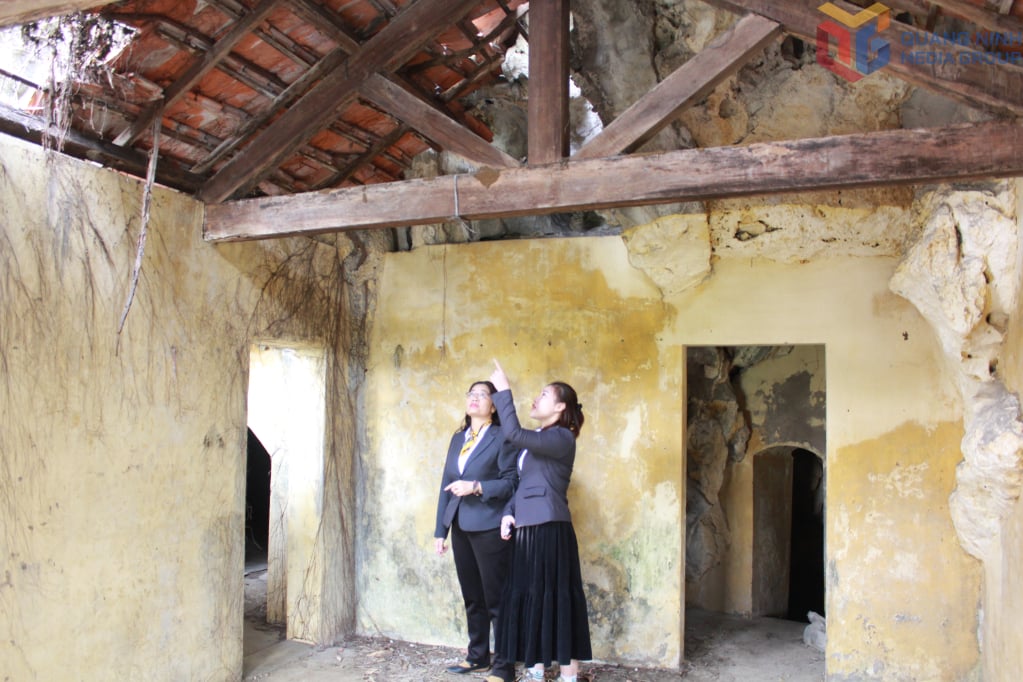
In addition to the Quang Ninh Post Office, Quang Ninh has many other stone cave relics that mark the evacuation and labor production process during the resistance war against the US. In Ha Long City, there are the evacuation cave relics of the Provincial Party Committee in Thong Nhat Commune and Ha Lung Cave in Son Duong Commune. In Cam Pha City, there are also two evacuation cave relics in Cam Thach Ward, marking the fighting and labor spirit of the army and people of the Mining Region during the resistance years.
From 1965 to 1972, the American invaders repeatedly used aircraft to bomb Cam Pha town, including Cam Pha Mechanical Factory. The Da Chong mountain area, Cam Thach ward became the factory's evacuation site. To move to Da Chong mountain cave, the factory had to use 83,987 trucks to level and improve the ground, remove about 20,000 cubic meters of earth and rock, build traffic tunnels and transport thousands of tons of equipment and machinery into the cave to continue production.
Twice, the factory transported machinery into the evacuation cave to ensure victory. In 1967, the US imperialists focused on attacking this evacuation site day and night, causing significant damage to people and property, but the factory still completed the production plan assigned by the State. 1971 was the year of achieving the highest plan, exceeding the set plan by 33.56%. Persistently sticking to production and fighting, the factory's self-defense force also achieved the feat of shooting down an American jet plane and was awarded the Second Class Military Exploit Medal in 1972. With its outstanding achievements in production and fighting, Cam Pha Mechanical Factory received a letter of praise from Uncle Ho and received his rotating flag four times. In 1996, Da Chong Mountain was recognized as a provincial historical relic.
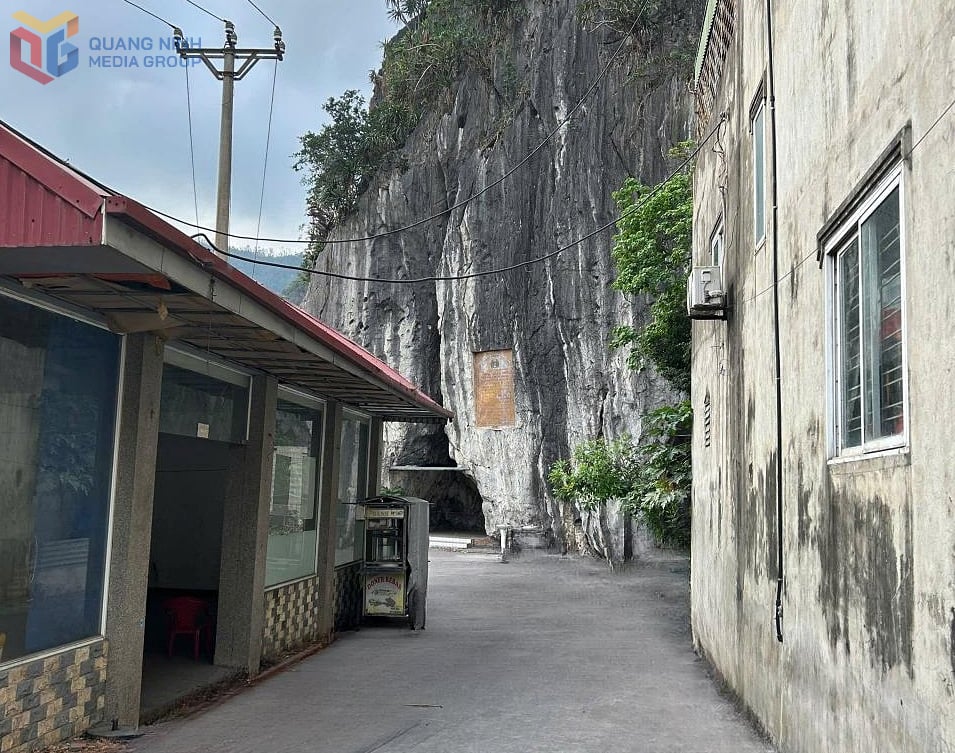
From the feats in the sky of Cua Ong, along the Cam River to the foot of Bai Tho Mountain, each relic not only marks the feats of a time of war, but also inspires the journey of building and defending the Fatherland today. Quang Ninh - the heroic land still constantly tells its historical stories, through vivid memories, through relics that are being preserved and promoted , and through the aspiration to rise up from hardship.
Ngoc Anh
Source


![[Photo] Panorama of the Opening Ceremony of the 43rd Nhan Dan Newspaper National Table Tennis Championship](https://vphoto.vietnam.vn/thumb/1200x675/vietnam/resource/IMAGE/2025/5/19/5e22950340b941309280448198bcf1d9)
![[Photo] General Secretary To Lam attends the conference to review 10 years of implementing Directive No. 05 of the Politburo and evaluate the results of implementing Regulation No. 09 of the Central Public Security Party Committee.](https://vphoto.vietnam.vn/thumb/1200x675/vietnam/resource/IMAGE/2025/5/19/2f44458c655a4403acd7929dbbfa5039)
![[Photo] President Luong Cuong presents the 40-year Party membership badge to Chief of the Office of the President Le Khanh Hai](https://vphoto.vietnam.vn/thumb/1200x675/vietnam/resource/IMAGE/2025/5/19/a22bc55dd7bf4a2ab7e3958d32282c15)
![[Photo] Close-up of Tang Long Bridge, Thu Duc City after repairing rutting](https://vphoto.vietnam.vn/thumb/1200x675/vietnam/resource/IMAGE/2025/5/19/086736d9d11f43198f5bd8d78df9bd41)




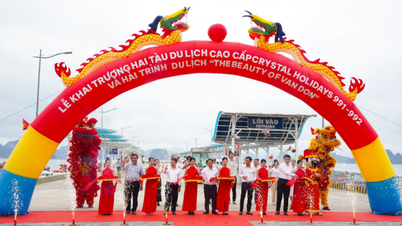


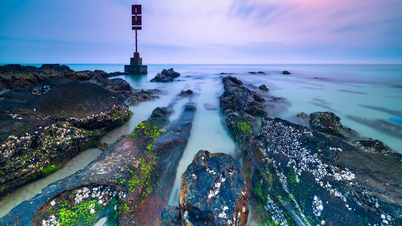




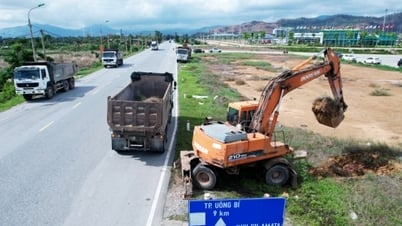

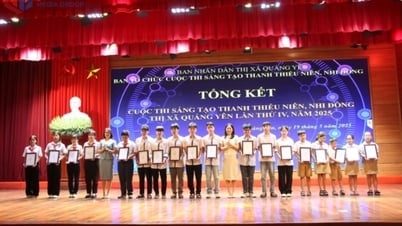
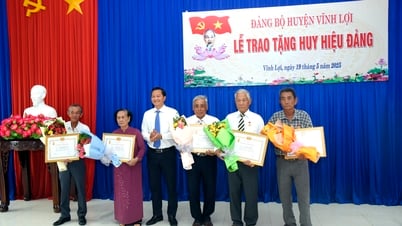








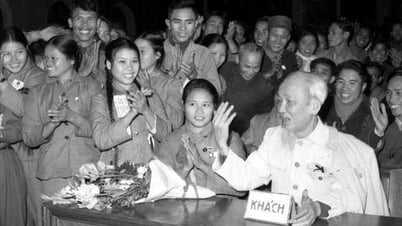



![[Photo] Prime Minister Pham Minh Chinh inspects the progress of the National Exhibition and Fair Center project](https://vphoto.vietnam.vn/thumb/1200x675/vietnam/resource/IMAGE/2025/5/19/35189ac8807140d897ad2b7d2583fbae)












































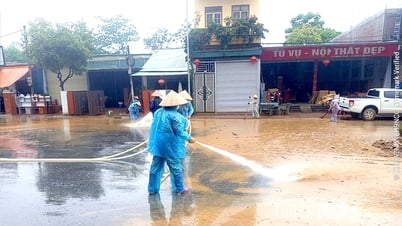









![[VIDEO] - Enhancing the value of Quang Nam OCOP products through trade connections](https://vphoto.vietnam.vn/thumb/402x226/vietnam/resource/IMAGE/2025/5/17/5be5b5fff1f14914986fad159097a677)



Comment (0)